

In this post, I offer explanations of the most common phonics spelling rules (and the exceptions) in the English Language. I introduce you to my Phonics Rules Guidebook which offers clear explanations of phonics spelling rules and teaching posters for the most common spelling patterns in English. This research-based resource will help you provide explicit spelling instruction to your students.
English spelling has a reputation as being unreliable and quirky, but the truth is that rules and patterns govern approximately 84% of words in the English language. Instead of memorizing the spelling of words, students need to be explicitly taught the rules that tell us how to spell words in English.
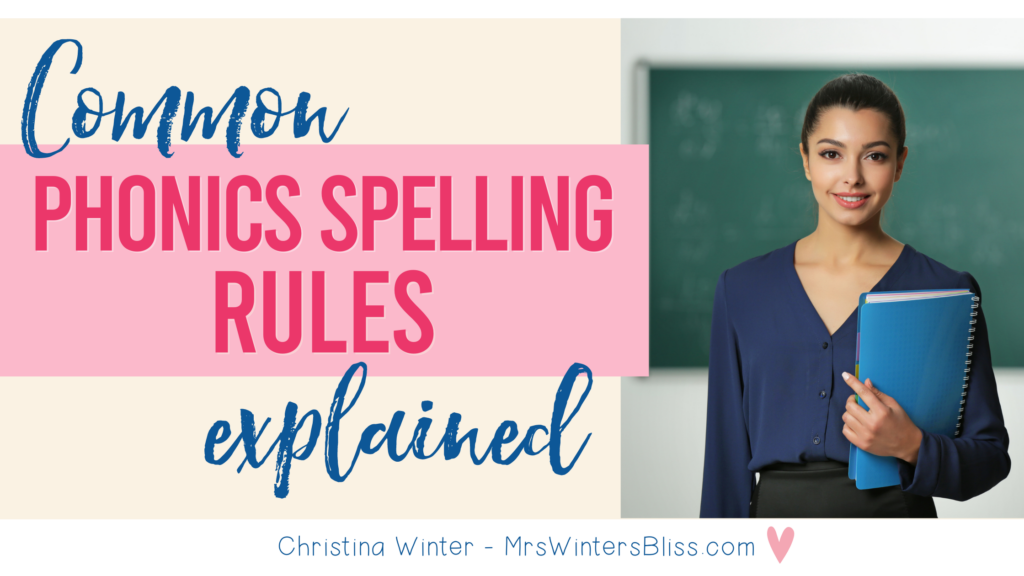
The challenge is that most of us were not taught these spelling rules in our pre-service training! Studies have found that the more a teacher understands about how English spelling works, the more likely it is that students will improve their spelling and decoding.
In my last post, I explained and defined the most common phonics terms you need to know when teaching phonics to K-2 students. Today I want to continue to support your learning by providing you with a clear explanation of the most common phonics spelling rules (and exceptions!) in the English Language. I will also introduce you to my Phonics Guidebook, a resource filled with explanations of all the phonics spelling generalizations you will ever need to teach your students!
The Most Common Phonics Spelling Rules
There are a lot of spelling and phonics rules in the English Language. Today I’m happy to explain three of the most common ones. I explain the rule and make you aware of any exceptions.
1. The Rule of Silent e / Magic e
Silent e has many different jobs in the English language. One of the most common is the phonics rule referred to as “Magie e”, “Silent e” or the“vowel-consonant-e” pattern.
The Rule of Silent e states that when “e” is the last letter in a word the preceding syllable has just one vowel, the first vowel says its name (the long vowel sound), and this “e” becomes silent.
Examples of Silent or Magic e include plane, tide, bake, hope, and rude.
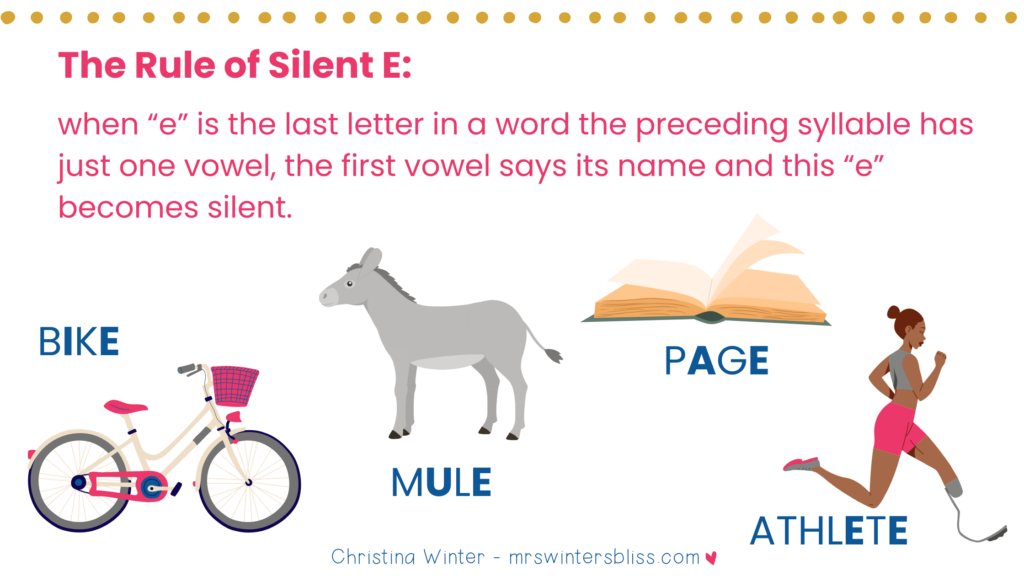
You’ll want to teach students that there are some common exceptions to this rule including the words “have,” “come,” “some” or “love”. These words have short vowel sounds and can be taught as Heart Words.
Additionally, The “magic e” is taken away when we add a suffix beginning with a vowel. For example, the word “bake” becomes “baking”. The -e is dropped when -ing ending is added.
2. The Floss Rule
After students have learned all the consonants and short vowels, they can learn the Floss Rule. The Floss Rule helps you know when to double the final consonant. It states that we double the final consonant when:
- The word is one syllable
- The word has a short vowel
- The word ends in f, l, or s (occasionally other consonants are doubled as well)
Examples include: stuff, gruff, grill, small, pass, chess
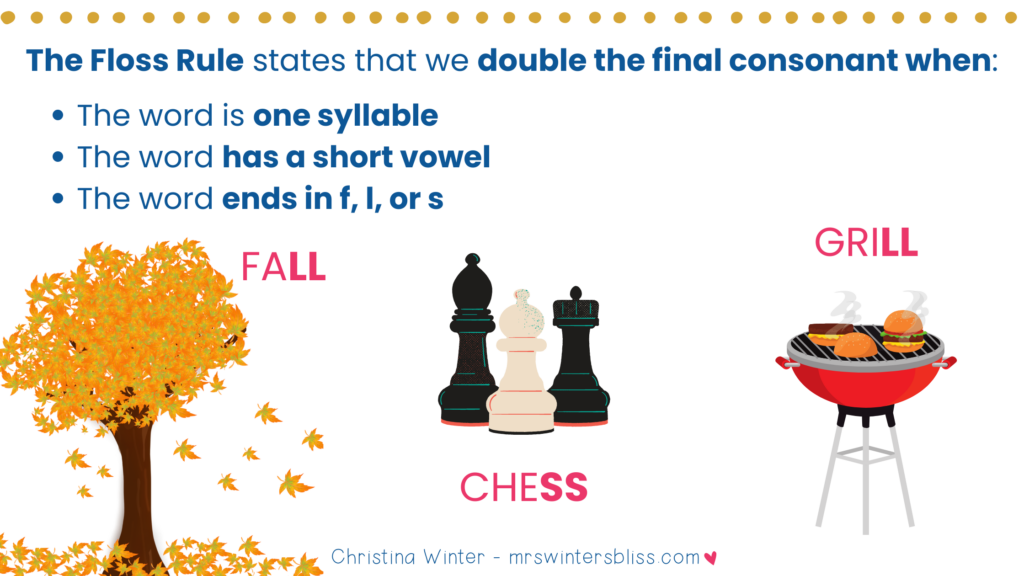
When students are trying to determine if they should double the final consonant encourage them to ask these questions:
💕 Is the word a one-syllable word?
💕 Does the word have a short vowel?
💕 Does it end with the f, l, or s sound?
If the answer to all three questions is yes, then they double the final consonant.
Exceptions to the Floss Rule
There are a few exceptions to this rule including if, yes, gas, of, this, gal, us, bus, plus, and quiz.
3. How to Know if a Word Ends in -k -ck or -c
After you teach the Floss Rule, often the next spelling generalization that is taught is the C/K/CK spelling rule. It is helpful if students know about closed and vowel-consonant-e syllable types and are familiar with long and short vowel sounds before you teach this about -k, -ck, or -c endings.
The -k or -ck rule states:
💕 If the /k/ sound is preceded by a long vowel sound or consonant, it is spelled with a k. Examples include words like bake, soak, or task.
💕 When you hear the /k/ sound at the end of a word and the /k/ immediately follows a short vowel sound, the ending is -ck. Examples include duck, kick, or sock.
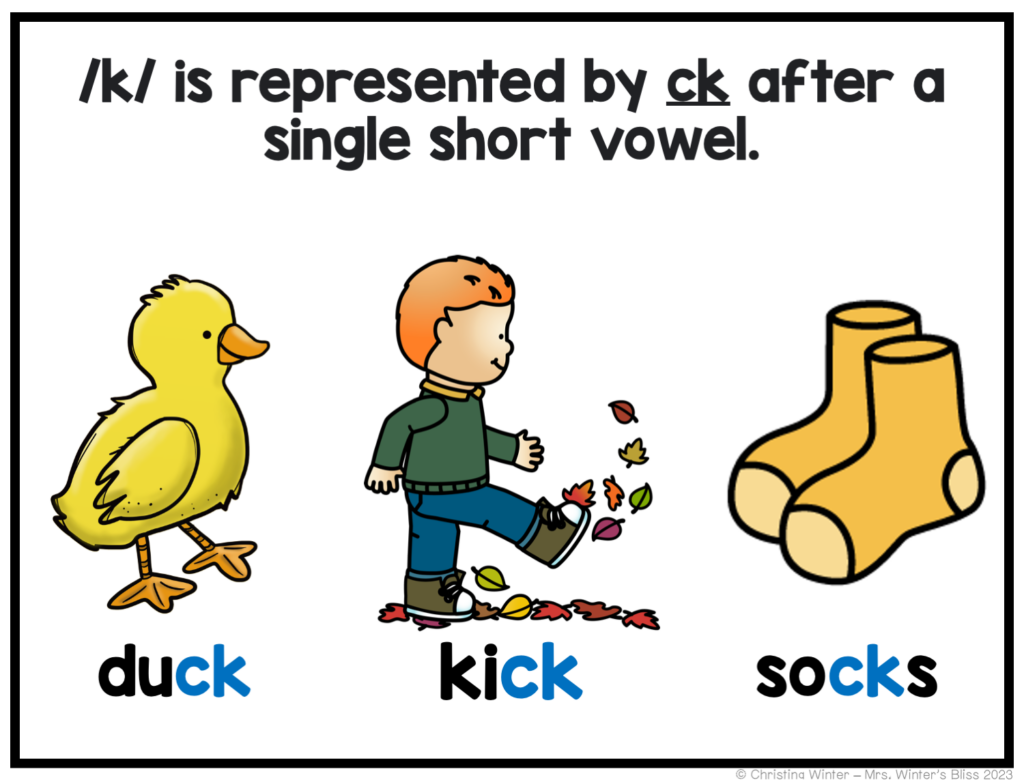
When is it -c and not -k or -ck?
When you have multisyllabic words ending with the /k/ sound, it is often spelled with c. Examples include frantic, fantastic, maniac, and zodiac.
You’ll also find the -c ending in many words that are shortened forms of longer words. These words include zinc, mac, talc, and sync.
When helping students to decide if a word ends in -c, -k or -ck ask the following questions:
💕 Is it a one-syllable or multi-syllable word?
💕 Is the vowel in the word long or short?
💕 Is the word short for something else?
My Phonics Rules Guidebook

c
Are you looking for more explanations of other common phonics spelling rules? If so, my phonics rule guidebook is the perfect resource for you.
This research-based resource is designed to build teacher knowledge of phonics spelling pattern generalizations. As always, there are some exceptions to each spelling pattern, and you’ll also find those in this guidebook. Simply print the guidebook and place it in a three-ring binder for easy reference throughout the year!
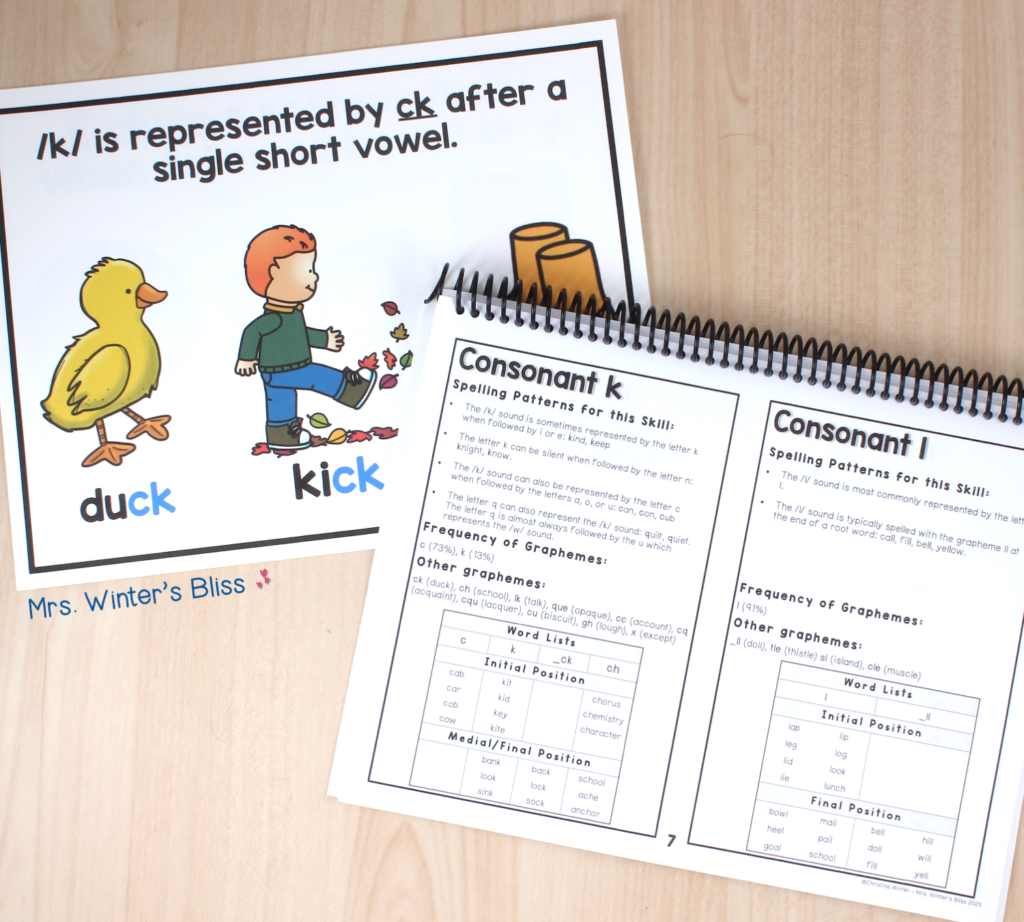
.
This guidebook is divided up by phoneme (sound). Each phoneme information page includes:
💕 spelling pattern generalizations
💕 the frequency of common graphemes
💕 other less frequently used graphemes
💕 a sample word list
You’ll also get printable teaching posters for some of the most commonly taught spelling patterns!
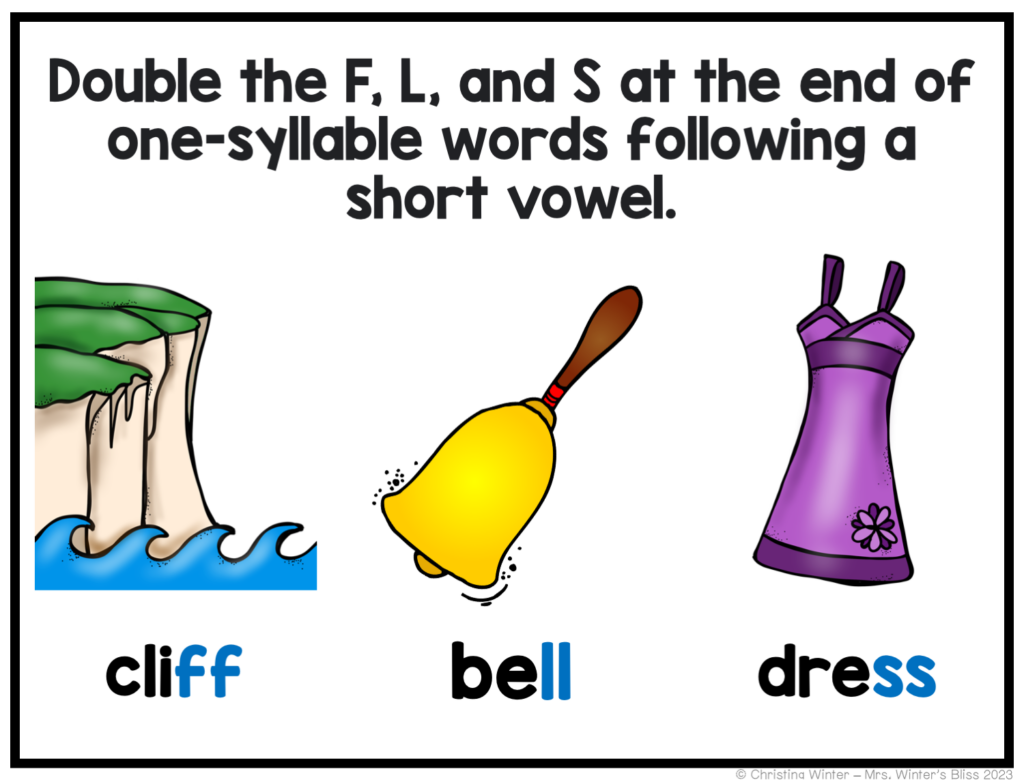
.
-
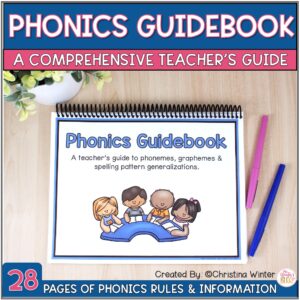 Phonics Guidebook – Phonics Rules and Teaching PostersEarn 0 Reward Points
Phonics Guidebook – Phonics Rules and Teaching PostersEarn 0 Reward Points
$14.00Rated 4.78 out of 5 based on 9 customer ratings
To get you started, I am happy to share this FREE Jobs of Silent e Teaching Poster.

Drop your email below to instantly receive this Jobs of Silent E download!
I hope the information and resources I have shared here will help to build your knowledge base of English spelling rules and allow you to provide your students with the explicit spelling instruction they need to be successful readers and writers!









